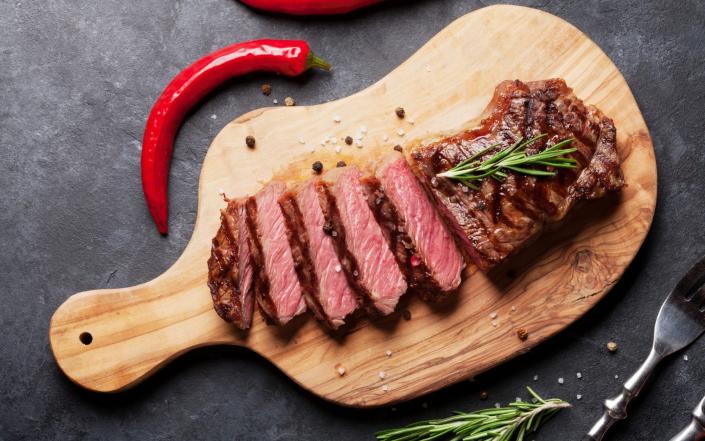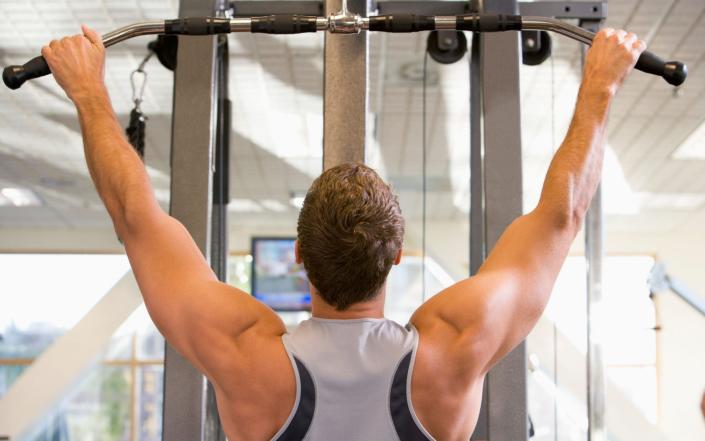[ad_1]
Due to our often sedentary lifestyles and stressful jobs – self-medicated with biscuits and pub trips – belly fat can easily build up.
Fat deposits around the middle have previously been linked to serious health issues, including Type 2 diabetes, high blood pressure and cardiovascular disease.
In its extreme, obesity reduces life expectancy by an average of three to 10 years, depending on severity, according to the NHS. It is also estimated that obesity and being overweight contribute to at least one in every 13 deaths in Europe.
So, with many of us feeling that we have put on a little weight here and there, and with stubborn tummy fat hard to shift – how can you get back in shape in 2023?
How to get rid of fat in 10 easy steps
1. Drink less alcohol


Yes, it can be very tempting to reach for the Merlot at the end of a particularly taxing day, but studies show that alcohol is one of the main offenders when it comes to storing belly fat. Consider this: if you consume just two glasses of wine an evening, that’s an extra 72,000 calories a year, which equates to 20 pounds of fat.
Alcohol contains a very high amount of “empty” calories which don’t have any nutritional value. Women are more likely to store the fat created by these surplus calories on their hips, thighs and arms, whereas men store it on their tummy, hence the “beer belly”.
If you’re keen on reducing your tummy fat quickly, it’s advised that you cut out alcohol from your diet completely. If that sounds too severe, try to at least stay under the NHS-recommended 14 units (spread across three days or more). Aim to cut down your intake by capping your nightly intake to two glasses, and always having several alcohol-free days each week.
2. Eat a high protein diet


There’s a good amount of evidence to suggest that protein is key to losing tummy fat. Firstly, it releases the hormone PYY, which helps to send a message to your brain that you’re full. A good portion of protein in a meal should help you avoid overeating.
Many observational studies prove that people with a higher protein intake have lower levels of belly fat. It also raises your metabolic rate, making you more likely to build muscle during and after exercise. Try to get a serving with every meal: breakfast, lunch and dinner.
3. Reduce your stress levels
Stress causes your body to gain fat because it triggers the release of the stress hormone cortisol, which in turn increases your appetite.
How do you relieve stress? To an extent, the answer is entirely personal – we’re all different – but studies consistently show that getting out in nature and regular bouts of meditation work to reduce our anxiety.
4. Don’t eat a lot of sugary foods
Calorie for calorie, sugar is different to other food groups such as protein, complex carbohydrates, and fat, because it confuses your normal appetite controls and causes your body to produce fat.
Refined sugars are often hidden in a plethora of different products that you wouldn’t expect such as fruit juices. Make sure to check the labels before eating the products.
5. Address food sensitivities
People often have food sensitivities that go unaddressed for years. If you think you may be suffering from an allergy, it’s important that you report it to your doctor who may refer you to a dietitian.
Common food sensitivities include dairy and gluten, both of which can result in an inflammation of the gut, making it even more prone to developing more sensitivities. Addressing these allergies can have dramatic impacts on weight loss, and even mood and behaviour.
6. Build up your strength


Everyone knows that regular exercise is necessary in order to lose weight; however, not everyone knows that resistance training is one of the best ways to do so.
Resistance training, also known as weight lifting or strength training, is important for improving and maintaining muscle mass. It also helps to spike our metabolisms, which means your body burns fat even after you’ve put the weights down.
However, it’s worth saying that the best possible training plan probably combines a variety of exercises.
7. Get plenty of sleep


Sleep is one of the most important aspects of your overall health and wellbeing, especially when it comes to managing your weight. A 2013 study by the University of Colorado found that one week of sleeping about five hours a night led participants to gain an average of two pounds.
Easy ways to improve the quality of your sleep are by making sure you don’t look at screens late at night and by doing some gentle yoga before bed.
8. Eat fatty fish every week
Omega-3 fatty acids are lauded with such attractive qualities as delaying ageing and fighting degenerative diseases. However, it’s less well known that eating fatty fish is also excellent for weight loss (when accompanied by a balanced diet and regular exercise, of course).
Foods such as mackerel and herring are high in protein and “good fats” that help to break down some of the more dangerous fats in your body. Try to eat fish two or three times a week.
9. Replace some of your cooking fats with coconut oil


Put aside the butter and olive oil and try coconut oil instead.
According to Web MD – and other medically-led sites – the medium-chain fats in coconut oil boost metabolism and decrease the amount of fat you store in response to high calorie intake.
10. Eat plenty of soluble fibre
Soluble fibre is ideal for aiding weight loss because it forms a gel with the food in your digestive tract, slowing it down as it passes through. This type of fibre promotes gut bacteria diversity, which has been frequently linked to a lower risk of belly fat.
Excellent foods to eat to increase your soluble fibre intake include avocados, legumes (try lentils, peas or chickpeas) and blackberries. In a 2021 study, volunteers ate one meal provided by researchers each day – one group ate an avocado, while a control group ate a meal similar in calories, but with the Instagrammer favourite left out.
“Female participants who consumed an avocado a day as part of their meal had a reduction in visceral abdominal fat,” says study leader Naiman Khan, the Illinois professor of kinesiology and community health. “However, fat distribution in males did not change, and neither males nor females had improvements in glucose tolerance.”
Easy exercises to burn belly fat
The best way to burn belly fat is to add around 30 minutes of cardio or aerobic exercise into your daily exercise routine.
Researchers from the Mayo Clinic in Minnesota ranked a variety common exercises based on information obtained from the US National Institutes of Health. The research calculated the number of calories burned during an hour of each exercise, with surprising results. With this in mind, these are some of the best work-outs to try:
Walking
Picking up the pace of your walk can work wonders for burning fat. When it comes to enjoying a brisk walk (3.5mph), you can burn between 314 and 391 calories.
A 2013 study by the University of Michigan also found that walking on uneven terrain while hiking increases the amount of energy your body uses by 28 per cent compared to walking on flat ground.
Skipping
Similarly to the above, skipping can help burn between 861-1,074 calories per hour, and thus burns fat. It is also a weight-bearing exercise so can help to improve bone density, which helps stave off osteoporosis.
Running
It goes without saying that running is a great way to burn calories. Running at 8mph will burn around 861-1,074 per hour (depending on your weight); you can burn 606-755 calories even running at 5mph, and 657-819 by simply running up the stairs.
Additionally, a 2005 study by the British Journal of Sports Medicine found that sedentary women who incorporated stair climbing into their daily activities increased their VO2 max, or maximum aerobic capacity, by 17.1 per cent and reduced “bad” LDL cholesterol by 7.7 per cent. (Read our guide to the best fitness trackers to learn how to track your workouts.)
Swimming
Experts agree that “vigorous swimming” is a full-body workout that is great for your joints. (By vigorous we’re sure they don’t mean splashing about in the shallow end.) It will help burn between 715-892 calories per hour of activity.
Breaststroke is the least beneficial stroke for burning calories, but a much better cardiovascular workout than the other strokes.
This guide is kept updated with the latest advice.
[ad_2]
Source link
